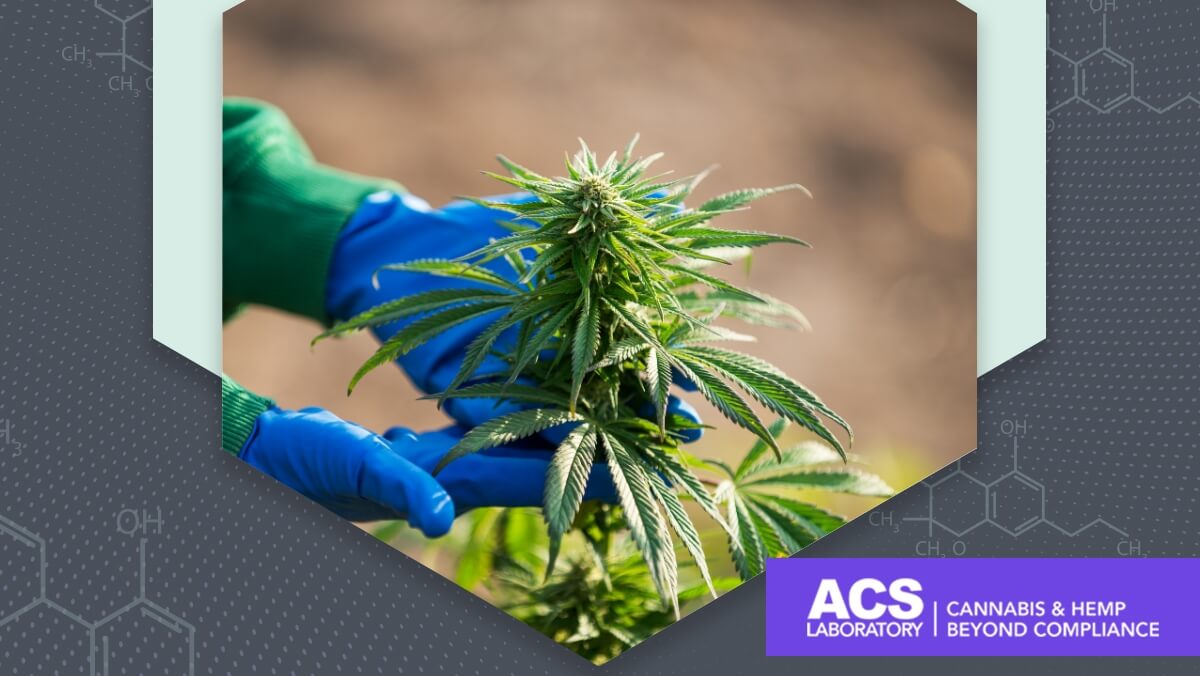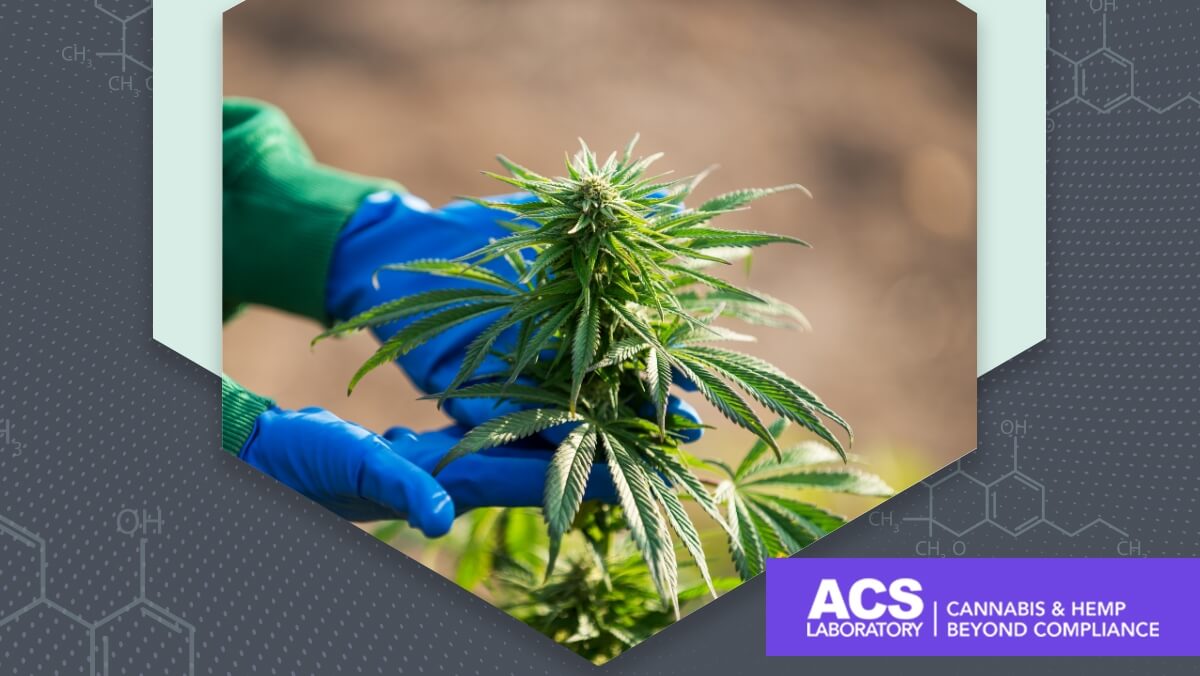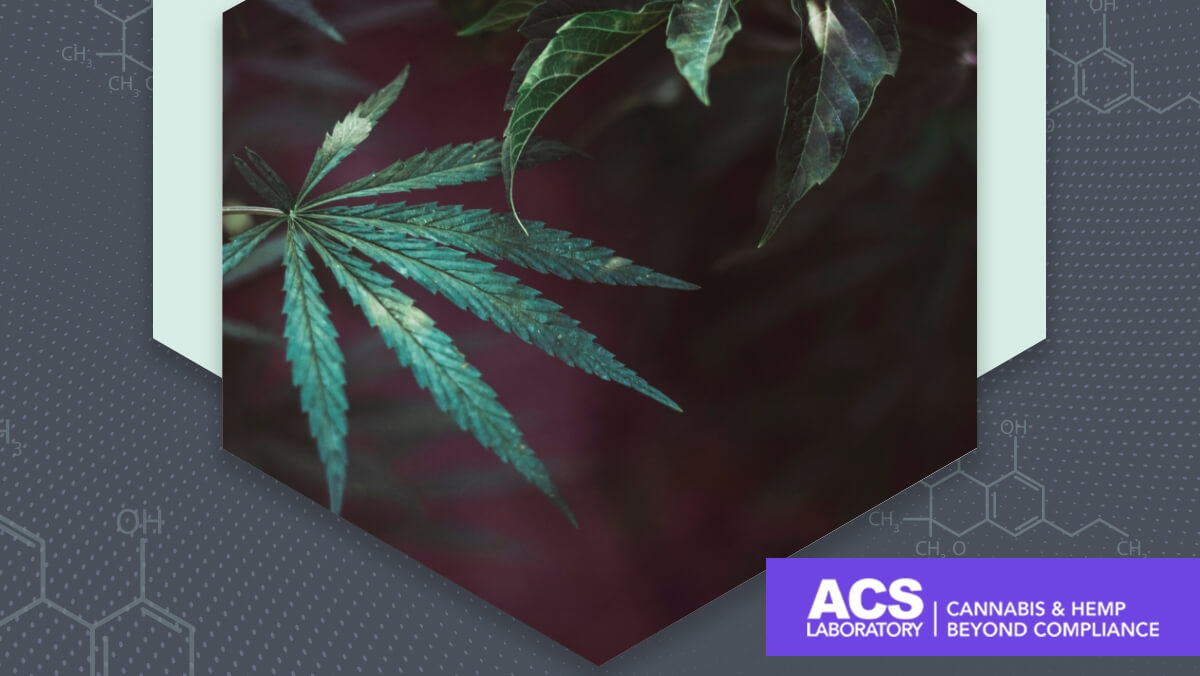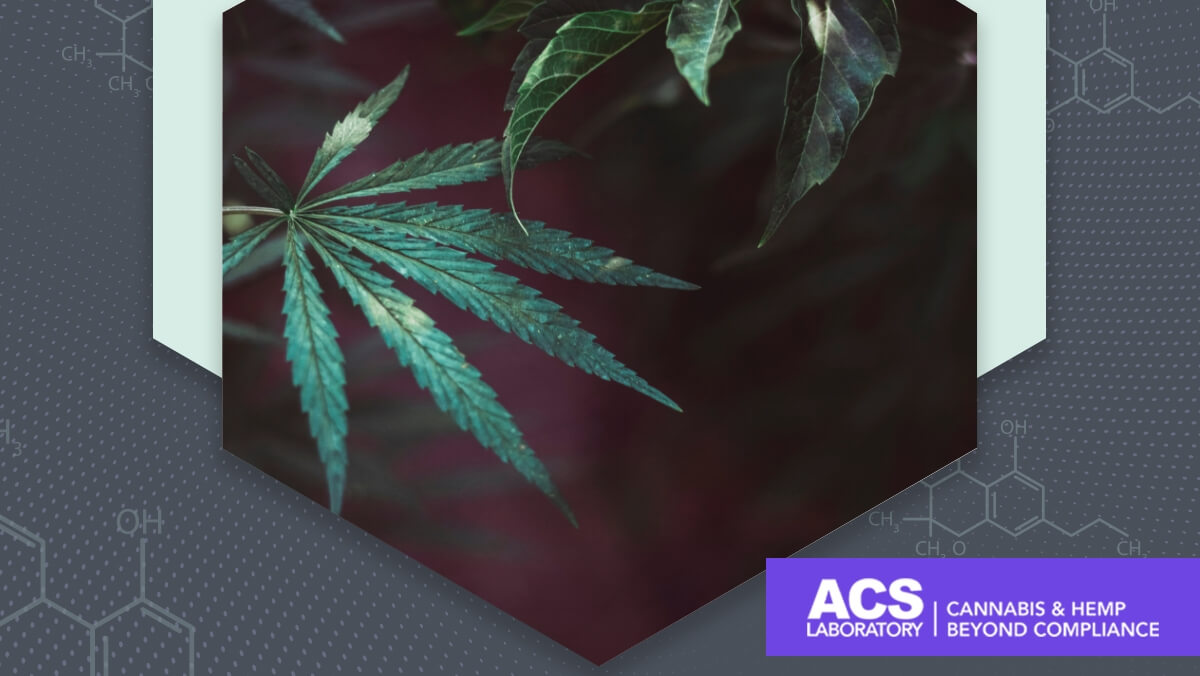In this post:
- What are the Health Risks?
- So What Exactly are PAHs?
- Could Wildfires be Compromising the Safety and Quality of Hemp Crops in California, Oregon and Washington?
- What Other Ways Can PAHs Contaminate Cannabis?
- How Common is PAH Contamination in Hemp and Cannabis?
- What are the Safety Limits for PAHs in Cannabis?
- Can Cannabis Companies Remediate PAH-Contaminated Crops?
- How Can Consumers Know If a Product Is Safe to Ingest?
- Why We Test for PAHs

U.S hemp and cannabis companies aren’t legally required to test for polycyclic aromatic hydrocarbons (PAHs)–common environmental toxins. But ethically, they have a duty to protect consumers from ingesting unsafe products.
This is especially true for hemp and cannabis producers in Western states, whose wildfires might be a key source of contamination. As a result of the danger PAH chemicals pose, ACS tests products from all 50 states to be sure they’re clean.
What are the Health Risks?
While the U.S. is behind in regulating PAHs in cannabis, the EU first established maximum limits for PAHs in oil-based food supplements in 2015. That’s because PAHs are readily absorbed from the gastrointestinal tract and known to cause cancer due to the damage they impart onto human DNA. They are extremely toxic, mutagenic, and carcinogenic, which can all lead to a variety of serious diseases.
PAHs can also cause extreme skin and eye irritation. Verified testing is the only way to guarantee that hemp and cannabis products are safe to ingest.
So What Exactly are PAHs?
PAHs consist of about 500+ environmental contaminants, which can accumulate in oils. They are primarily formed by the burning of carbon-based organic matter, which can occur during industrial processes such as wood and coal combustion, as well as power generation, or through natural fires. Other sources are gasoline and diesel-powered engines. PAHs can also form during common home cooking practices like baking and frying meats at high heat.
PAHs generally occur in complex mixtures that consist of hundreds of harmful compounds. For cannabis users, the number one route of PAH ingestion is through CBD oils. However, PAHs can technically contaminate flower as well.
Could Wildfires be Compromising the Safety and Quality of Hemp Crops in California, Oregon and Washington?
So far this year, fires in California, Oregon and Washington have burned more than 3 million acres of forests. Along the way, they’ve killed dozens of people, burned down buildings, and caused extreme air pollution.
The fires are directly impacting human health through inhalation. But they’re also causing indirect damage from the burning wood that releases toxic compounds such as PAHs into the air. These chemicals then travel through smoke and ash, landing on agricultural crops throughout the region.
In Oregon, 17 percent of grow sites faced immediate danger from the West Coast wildfires. With ash pouring down on sticky cannabis flowers, traces of toxic chemicals absorbed into plant materials are a major concern for cannabis researchers, industry leaders and consumers alike.
While no one knows the extent of damage these fires have caused, historical research proves that excessive PAH content in CBD oils can be directly attributed to nearby forest fires. To explore the effects of this particular set of wildfires, Oregon State University recently formed the Global Hemp Innovation Center.
The associate director of the Center is reportedly launching a Smoke Effects Working Group to collect samples from farms in California, Oregon and Washington and develop methods of analysis. Along with polycyclic aromatic hydrocarbons, the team is also concerned with contamination of heavy metals released from burning buildings.
While researchers conduct long and short term studies, hemp and cannabis operations cannot take chances today. They must work with third party laboratories to test their cannabis oils, extracts, edibles and flower.
What Other Ways Can PAHs Contaminate Cannabis?
PAHs are very soluble in organic materials and can easily contaminate cannabis plants used for extraction. According to New Food Magazine, this most likely occurs during the drying phase if the plants are exposed to smoke or dust. Recent research from the Frontiers in Pharmacology journal also notes that PAH contamination can also occur from drying cannabis with propane heaters.
The issue with the extraction process is that PAHS are similar to cannabinoids–both are fat soluble. Thus, both can be extracted together from the plant material when processing it into an oil.
How Common is PAH Contamination in Hemp and Cannabis?
The University of Technology, Prague recently teamed up with the International Institute for Cannabis and Cannabinoids to study various whole plant and CBD-based oils.
The results were staggering. Only 9 out of 29 tested CBD oils were below the legal safety limits. That means about 60 percent of the products exceeded the threshold. Conversely, the whole plant oils performed much better.
92% of cannabis oils (which the study defined as oils from cannabis seeds and not from the plant) satisfied the legal limits of PAH in foods.
What are the Safety Limits for PAHs in Cannabis?
Currently, neither Florida nor the federal government has safety limits in place for PAHs in cannabis. But the EU does. According to the Commission Regulation in the EU, these are the following limits for the most dangerous and common PAHs in edible oil-based food supplements..
- benzo (a) pyrene - 2 µg/kg
- the sum of benzo(a)pyrene, benzo(a)anthracene, benzo(b)fluoranthene and chrysene - 10 µg/kg
Can Cannabis Companies Remediate PAH-Contaminated Crops?
It may be impossible to fully eliminate PAHs entirely in cannabis products due to the diverse sources from which they’re derived. In fact, PAHs can even be produced during the process of smoking cannabis. However research suggests bioremediation may be an option for farmers and processors who are dealing with unsafe levels of PAH contamination.
Bioremediation is a process that uses natural organisms such as bacteria and fungi to transform contaminants into less hazardous forms. According to research published in the Egyption Journal of Petroleum, success of this process will depend on several factors including: “the environmental conditions, number and type of the microorganisms, nature and chemical structure of the chemical compound being degraded.”
How Can Consumers Know If a Product is Safe to Ingest?
Unfortunately not every company and laboratory tests for PAHs. The only way to know if a product was tested for these chemicals is to check the Certificate of Analysis (COA) and scan the document to be sure that it contains information about PAHs. If the COA does not contain any details, that means the product was not tested and should potentially be avoided.
Why We Test for PAHs
Currently, there are no legal standards related to PAH testing. However by law, all consumable products must be safe to ingest. That means it’s imperative for responsible companies–especially those based on California, Oregon, or Washington–to test hemp and cannabis to be sure it is free from these dangerous chemicals. Brand reputation, cannabis industry success, and consumer health rely on it.

ACS Laboratory’s testing panel and protocol is compliant with Florida’s Hemp Program. ACS meets federal requirements by testing to the standards of Florida, the strictest state. The compliance panel consists of: Cannabinoid Potency, Pesticides, Residual Solvents (unless its flower), heavy metals, mycotoxins, moisture, microbiology.
Contact ACS today.



.jpg)





.png)
.png)
.png)
.png)
.png)